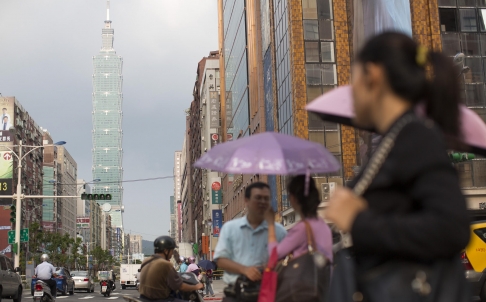
Since the opening of Taiwan’s tourism market to mainland tourists in the middle of 2008, visitor arrivals from the mainland have soared 880 per cent, reaching 2.59 million last year. They accounted for about one third of total arrivals on the island – although the figure is still insignificant compared to the 34.9 million mainland visitors to Hong Kong last year.
However, with visitor numbers continuing to rise, driven by the seemingly insatiable appetite of mainland tourists for shopping, with a particular focus on luxury goods, is Taiwan set to follow Hong Kong’s lead and significantly boost its economy by creating a viable alternative international shopping destination for the region?
There is no doubt that the influx of mainland capital and tourists has had a profound impact on Hong Kong’s retail and real estate markets. Taiwan’s property sector has yet to see any dramatic changes as a result of deregulation which began in 2008, but its retail sector is already being transformed.
Taipei 101, the skyscraper in the city’s Xinyi district that was formerly known as the Taipei World Financial Centre, is now a must-visit destination for shoppers, offering more than 20 luxury watch brands as well as Dior, Burberry, and Louis Vuitton fashion outlets.
While local shoppers remain the largest contributor to sales at the Taipei 101 mall, the fact that at least 3,500 mainland tourists are now visiting each day is a key attraction for major international retailers renting space in the skyscraper.
Statistics have shown that mainland visitors are the top spenders, with 59 per cent of their daily spending during their visits to Taiwan devoted to shopping, whereas for all other tourists, the average spending on shipping as a percentage of daily expenditure is 33 per cent.
Aside from creating a tenant mix to suit the mainland visitors’ requirements, the Taiwanese government has launched a range of further measures to enhance their overall shopping experience. These include allowing shoppers to swipe their UnionPay cards and later permitting money to be withdrawn from ATMs. In 2012 alone, mainland visitors spent NT$91.6 billion (HK$23.7 billion) in Taiwan via cards issued by China UnionPay, representing a 75 per cent year-on-year surge.
Unlike their counterparts in Hong Kong, the majority of high street shops in Taipei have not yet experienced mainland spending power. The number of mainland visitors shopping in Hong Kong is extremely high, as 66 per cent of mainland visitors are independent travellers.
The corresponding figure in Taiwan, however, is only 7 per cent, and since most mainland visitors travel in tour groups they often visit certain tourist attractions and souvenir stores, but not the major shopping streets.
However, certain shopping precincts have benefited from the inflow of mainland tourists. The Ximending area in Taipei, for example, saw a 42 per cent rise in street shop rents over the past three years thanks partly to high pedestrian traffic stemming from mainland and Hong Kong visitors. Other shopping districts not listed in group tourists’ itineraries mostly posted moderate rental growth during the same period.
As the Taiwanese government endeavours to draw more tourists from the mainland by easing regulatory restrictions, rents for high street shops in Taipei are likely to increase accordingly.
In addition to the retail sector, the hotel industry has been another hot topic among investors in Taiwan since cross-strait relations grew closer in 2008 and deregulation began. Over the past three years 45 new hotels have opened in Taipei, offering a total of 3,920 extra rooms. The average occupancy level of hotels in the city remained above 75 per cent, while room rates stayed on an upward trend.
However, economy hotels outperformed higher-end hotels in terms of room rates. Average daily rates for economy hotels increased by 6 per cent a year, double that of the upscale hotels. This is mainly attributed to the spending habits of mainland tourists, who spend only 16 per cent of their travel budgets on accommodation compared to Japanese tourists, who allocate 38 per cent of their budgets to hotels, and the 64 per cent allocated to accommodation costs by visitors from the United States and Europe.
Aside from mainland visitors, thanks to the increasing arrival of young international tourists, mainly from Hong Kong and Japan, Taipei has seen a rise in the supply of small hotels, which normally provide 20 to 60 guest rooms. To capitalise on the tourism boom, a number of domestic hotel groups launched a new line of economy hotels in addition to their upscale hotels. Boutique and business hotels are also on the rise. Some older office buildings in Taipei’s central business district have been converted to small- to medium-sized hotels of all classes in recent years.
A number of international hotel chains have displayed strong interest in Taiwan as well. Le Meridien and W Hotels both tapped into the Taipei market two years ago and enjoyed immediate success, joining the most expensive hotels in Taipei with room rates of over HK$3,100 per night and annual average occupancy hovering around 75 per cent. CBRE has received inquiries from international hotel groups seeking entry opportunities as well as foreign funds looking to purchase hotel properties.
However, a limited supply of development sites in prime locations and a lack of hotels available for acquisition, has kept them in a “wait-and-see” mode.
We believe looser restrictions on mainland travellers are beneficial to Taiwan’s economy, and as many countries in Asia and further afield step up their efforts to attract mainland Chinese tourists, Taiwan surely cannot be left behind. Currently, the Taiwanese government is set to allow mainland residents of an additional 13 cities to visit individually, but more efforts are required. Taiwan is an “Ilha Formosa” that has every chance to be a major tourist destination.

